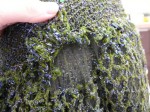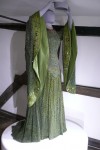Google Street View continues to add new sites to their already impressive list of historical locations you can explore online. Now that they use tricycles as well as cars to travel the world photographing what they see, they can follow paths that cars cannot, like for instance the inside of the Colosseum.
As of yesterday, Google Maps offers tricycle-captured Street Views of some of the most historically significant sites in Italy and France, with the promise of more to come. The Official Google Blog reports:
In few clicks you can navigate through centuries of history. Start at the birthplace of Rome, the Palatine Hill, where the mythical founders of the city, Romulus and Remus were found and saved by a she-wolf, and where the most ancient buildings of the city are located. Follow the Appian Way, a little path that became one of the most strategically important roads of ancient Rome. After the long walk, experience the splendor of Imperial Rome at the Thermae (Baths) of Diocletian—ancient wellness and cultural centers with 33 acres of pools, gymnasiums and public libraries.
After wandering around Rome, you can fast forward in time to witness the celebrated architectural wonders of the Italian Renaissance, including Giotto’s Campanile (bell tower) and Brunelleschi’s Cupola (dome) in Santa Maria del Fiore in Florence. While in Florence don’t miss the opportunity to walk through Ponte Vecchio and shop at the famous artisan jewel stores built on top of it!
I checked (of course), and the pictures of the shop windows aren’t high res enough to drool over the details of the jewelry on the Ponte Vecchio. It’s still a fantastic stroll, as is the walk around the Piazza di San Giovanni, the square where you can see the Duomo of Florence in front of you, then turn around and see the Baptistry of San Giovanni behind you with the copies of its three sets of intricately carved bronze doors, the south doors by Andrea Pisano, the north and east doors by Lorenzo Ghiberti. The east doors are the famous “Gates of Paradise,” so dubbed by none other than Michelangelo. (The ones you see in place now are reproductions. The originals were removed for preservation purposes in 1990 and are now in the Museo dell’Opera del Duomo.)
In France, you can visit the Palace of Fontainebleau, one of the largest and most beautiful of France’s royal châteaux.
Also, if it’s been a while since you checked Street View’s gallery of UNESCO sites, they’ve added seven new ones all from Japan, including the Tenryuji temple and Himeji-jo castle.
I leave you with a stroll down the Via Appia Antica, which you will doubtless recognize from about a thousand movies if you haven’t seen it in person yet, and which is one of the most unreservedly magical picnic spots in the universe.







